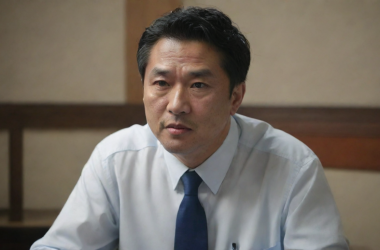Pulmonary nodules are becoming an increasingly common health concern. Emotions are often complex when receiving a medical report containing pulmonary nodules. On one hand, we may be told “Don’t worry, less than 5% of pulmonary nodules are malignant,” but on the other hand, news stories share negative narratives, like “Two sisters diagnosed with lung cancer half a year after discovering nodules.” Faced with such conflicting information, many people naturally become nervous and concerned.
Can pulmonary nodules turn into lung cancer?
In reality, the majority of pulmonary nodules are not lung cancer. However, after diagnosing a nodule, doctors usually recommend regular check-ups to closely monitor any changes. This is not because pulmonary nodules tend to become lung cancer in the future, but rather because a pulmonary nodule is a category encompassing various small structures that are not easily identifiable immediately. These could be early-stage lung cancer, metastatic cancer, or more commonly, remnants of infection, benign tumors, lymph nodes, vascular dilations, cysts, etc. These benign nodules typically do not develop into lung cancer.
The purpose of regular check-ups is to identify those few potential small-scale malignant changes early on. Benign nodules that were benign in the past will continue to be benign in the future and will not affect health. There’s no need for excessive worry. Consider the follow-up as a process to confirm safety and to give yourself more confidence.
Is there a high probability that my pulmonary nodule is malignant?
Even though we know that most pulmonary nodules are safe, waiting for the results of the follow-up can still be anxiety-inducing. Currently, we have various criteria to assess the benignity or malignancy of pulmonary nodules, such as larger nodules being more likely to be malignant than smaller ones; solid nodules smaller than 5mm and ground-glass nodules smaller than 8mm are very likely to be non-malignant; most calcified nodules are benign; nodules with clear and smooth edges are more likely to be benign than those with rough and spiky edges; nodules located in the upper lobe of the lung are more likely to be malignant than those in the middle or lower lobes. However, these indicators cannot be taken as the final judgement, high risk does not equate to certain danger, and calcified nodules are not always safe.
Professional doctors usually combine these indicators, analyze comprehensively, and even apply professional scoring models to determine an appropriate follow-up plan, adjusting the frequency of the check-ups according to the level of risk. One should not overly fixate on one or two risk signals; the most important thing is to follow medical advice for follow-ups. If there are still concerns, professional medical advice should be sought.
One particular type of pulmonary nodule, called a ground-glass nodule, has traditionally been considered to be more closely associated with lung cancer. Especially those without solid components are often pointed out in scientific literature to have a higher potential risk of lung cancer. Hence, once these nodules are discovered, doctors often recommend a follow-up in 3 months to monitor their changes more frequently.
In the past, before CT technology was widely available, the discovery of a ground-glass nodule did indeed indicate an increased possibility of lung cancer. This is because diseases such as in-situ adenocarcinomas of the lung (which are actually not true lung cancers but rather precursor lesions) and minimally invasive adenocarcinomas tend to present as ground-glass nodules, especially when they are mixed with solid components.
However, with the passage of time and the widespread use of CT scans, we have discovered an increasing number of short-term and multiple ground-glass nodules caused by infections. In most cases, these nodules are not malignant but are temporary traces left by various infections. Usually, these nodules do not persist but are likely to resolve on their own. Therefore, the recommendation for a 3-month follow-up for multiple ground-glass nodules by doctors is not out of concern for danger, but to confirm early whether the nodules have subsided and to ensure the patient’s safety.
So, when faced with pulmonary nodules, how should we go about re-examination?
In fact, it is not necessary to indefinitely re-examine pulmonary nodules. Many people, due to incidental findings of pulmonary nodules on CT scans, start an endless cycle of worry and continuous CT examinations. However, this practice is not only unhelpful for health but may do more harm than good. The potential harm from radiation exposure during CT scans, coupled with excessive examination and treatment due to the nodules, often overwhelms the patients.
Health experts suggest that only individuals at higher risk of lung cancer should undergo regular CT scans. For incidental pulmonary nodules, doctors will recommend a certain number of re-examinations over a specific timeframe, in order to ensure that the nodules are not malignant. For example, for solid nodules, if no significant changes are observed over two consecutive years of examination, and you are not at a high risk for lung cancer, then you may cease further examinations. As for ground-glass nodules, if they disappear or show no significant change over a continuous 5-year period, and you are not part of the high-risk group for lung cancer, then you can also stop the examinations.
Since not all pulmonary nodules are malignant, how to prevent them becomes a question worth addressing.
In fact, talking about the prevention of pulmonary nodules is somewhat impractical. Pulmonary nodules are a general term that includes many benign and malignant small tissues, most of which have no significant impact on health and are often accidentally discovered due to the high precision of CT scans. There is no need to overly concern ourselves with those harmless benign pulmonary nodules because, with the continuous improvement of CT technology, almost everyone may be diagnosed with pulmonary nodules in the future.
To maintain health, we should mainly focus on preventing the potentially worsening pulmonary nodules, especially guarding against lung cancer. Lung cancer is not only a common malignant tumor worldwide but also the most prevalent in China. Compared to other types of malignant tumors, the occurrence of lung cancer seems to have a lower correlation with genetic factors and dietary habits. However, if there are younger direct relatives in the family who have suffered from lung cancer, or several direct relatives are affected, you still need to consult with an oncologist to understand the genetic background.
Lung cancer is related to various types of inhaled radiation, with smoking being the most critical. Quitting smoking is the most effective way to prevent lung cancer. Moreover, secondhand smoke, kitchen fumes, indoor radon pollution, occupational asbestos exposure, and other pollutants in the air may also increase the risk of lung cancer. Therefore, formulating a plan to reduce the exposure to these factors, taking personal circumstances into account, is also very beneficial in preventing lung cancer.
We hope that readers, after understanding how to identify and manage lung nodules, grasp when to conduct lung examinations and how to respond to lung nodules. If still uncertain, it is recommended to consult a professional doctor and make rational decisions based on the doctor’s judgment.
Online consultations with experts allow you to receive advice from thoracic surgery, respiratory medicine, and radiology experts from the comfort of your home. Depending on personal needs, you can also choose to consult with chief or associate chief doctors from top-ranked tier-3 hospitals in regions like Beijing, Shanghai, and Guangzhou. To make online diagnoses more accurate, clear diagnostic materials should be provided, such as outpatient records, diagnostic certificates, etc.
Online consultation requires just a few simple steps: First, organize the symptoms, duration, treatment status, and medical history needed for the consultation; second, if physical imaging materials like X-rays, CTs, or MRIs are available, photograph them according to the specified method and send them to the doctor; finally, based on your own condition, choose the appropriate doctor to ask your questions. Before asking, please ensure that all the information provided is complete and clear to help the doctor make an accurate judgment.
In modern society, consulting health issues has become increasingly convenient. You just need to search and enter the health platform’s mini-app to easily enter the consultation interface and get professional advice from doctors online.
A complete consultation experience includes up to three rounds of questions, where you can ask multiple questions in each round (with a maximum of 500 characters per time) and have the opportunity to upload relevant videos or pictures, such as examination reports or medication photographs, to help the doctor understand your health condition more accurately. The entire consultation process is valid for 24 hours.
If you are waiting for a reply or need to see the doctor’s answer, just visit the platform’s mini-app and navigate to the “My” area under the “My Consultations” section, where you can receive the doctor’s feedback in real time.
For more questions or personalized assistance, the platform also offers customer service. You can access “Online Customer Service” under the “My” menu in the same mini-app to receive immediate customer support.
This consultation service is assisted and planned by Wei Wei, a senior gastroenterology attending physician, aimed at providing patients with convenient and quick medical consultation services.







